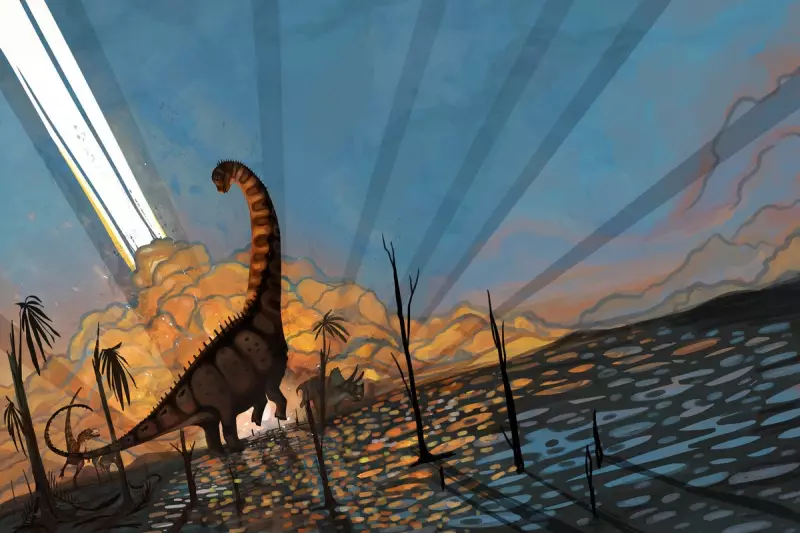
The long-standing mystery of how dinosaurs met their ultimate demise has been dramatically clarified by new scientific research, revealing that the infamous asteroid strike was merely the opening act in a catastrophic chain of events.
While the initial impact of the six-mile-wide space rock that created the Chicxulub crater was undeniably devastating, it was the subsequent 'impact winter' that truly sealed the fate of the prehistoric giants and 75% of all life on Earth.
The Real Killer Emerges
Scientists have determined that fine dust particles from pulverised rock, launched high into the atmosphere following the asteroid collision, played the most crucial role in the mass extinction event. This dust cloud effectively blocked sunlight for up to two years, creating a perpetual twilight that devastated global ecosystems.
Lead researcher Cem Berk Senel from the Royal Observatory of Belgium explained: "The dust proved far more lethal than previously thought. It remained in the atmosphere for up to 15 years, preventing photosynthesis and collapsing the entire food chain from the ground up."
Climate Catastrophe Unfolds
The research team created sophisticated climate models simulating the aftermath of the impact, considering various factors:
- Sulphur emissions from the vaporised rock
- Soot from global wildfires
- Fine dust particles from the impact site
Surprisingly, while sulphur initially caused dramatic cooling and soot contributed to darkness, it was the fine dust that persisted longest in the atmosphere, maintaining the deadly conditions that prevented plant recovery.
A World in Perpetual Twilight
Professor Özgür Karatekin, a co-author of the study published in Nature Geoscience, described the apocalyptic scenario: "For nearly two years, Earth existed in a state of near-total darkness. Global temperatures plummeted by up to 15°C on land, creating conditions where survival became impossible for most large species."
The research finally provides conclusive evidence for what many paleontologists had long suspected - that the immediate impact was only the beginning of the end for dinosaur dominance.





